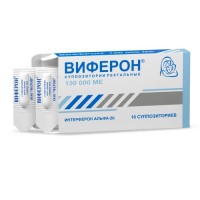Is Genferon an Analogue of Viferon? A Deep Dive into Antiviral Therapy
Is Genferon an Analogue of Viferon? A Deep Dive into Antiviral Therapy
In the expansive landscape of antiviral and immunomodulatory therapies, Genferon and Viferon stand out as two prominent medications often compared by healthcare professionals and patients alike. With their roots in interferon-based therapy, these medications promise significant benefits in combating viral infections and boosting the immune system. However, a deeper analysis reveals intriguing differences that can impact clinical decisions. This article aims to explore whether Genferon can truly be considered an analogue of Viferon by delving into their composition, mechanism of action, clinical applications, efficacy, and safety profiles.

Is Genferon an Analogue of Viferon? A Deep Dive into Antiviral Therapy
Introduction
In the expansive landscape of antiviral and immunomodulatory therapies, Genferon and Viferon stand out as two prominent medications often compared by healthcare professionals and patients alike. With their roots in interferon-based therapy, these medications promise significant benefits in combating viral infections and boosting the immune system. However, a deeper analysis reveals intriguing differences that can impact clinical decisions. This article aims to explore whether Genferon can truly be considered an analogue of Viferon by delving into their composition, mechanism of action, clinical applications, efficacy, and safety profiles.
Composition and Formulation: The Molecular Blueprint
At the heart of both Genferon and Viferon lies interferon alfa-2b, a powerful protein that orchestrates the body's antiviral response. However, the auxiliary components of each medication distinguish them in important ways:
- Genferon: This medication combines interferon alfa-2b with taurine and benzocaine. Taurine, an amino acid, provides antioxidant benefits and supports cellular repair, while benzocaine acts as a local anesthetic, alleviating discomfort in affected areas.
- Viferon: In contrast, Viferon pairs interferon alfa-2b with a robust blend of antioxidants, specifically vitamins E and C. These vitamins enhance the medication's ability to neutralize free radicals and protect cells from oxidative damage, thereby bolstering the immune response.
This divergence in formulation suggests that while both medications aim to enhance the body's antiviral capabilities, they do so through complementary mechanisms.
Mechanism of Action: The Cellular Symphony
Interferon alfa-2b, the cornerstone of both Genferon and Viferon, operates through several pivotal actions:
- Antiviral Activity: By inhibiting viral replication within host cells, interferon alfa-2b helps control the spread of infection.
- Immune Modulation: The protein enhances the activity of natural killer cells and macrophages, key players in the immune defense system.
- Enhanced Antigen Presentation: By increasing the expression of major histocompatibility complex (MHC) molecules, interferon alfa-2b improves the immune system's ability to recognize and target infected cells.
The additional components in each medication further refine these effects:
- Genferon: Taurine's antioxidant properties support cellular health and repair, while benzocaine provides symptomatic relief by numbing the affected area.
- Viferon: The synergistic effect of vitamins E and C extends the medication's protective capabilities, mitigating inflammation and oxidative stress, which are critical in managing viral infections.
Clinical Applications: Tailored Therapeutic Strategies
The distinct formulations of Genferon and Viferon translate into unique clinical applications:
- Genferon: Primarily used in the treatment of urogenital infections, including those caused by human papillomavirus (HPV), herpes simplex virus (HSV), and chlamydia. Additionally, it is employed in managing respiratory infections and as an adjunctive therapy in chronic viral diseases.
- Viferon: Extensively utilized for respiratory infections such as influenza, common cold, and viral pneumonia. It is also a cornerstone in the treatment regimens for chronic hepatitis B and C, leveraging its antioxidant properties to support long-term viral suppression and liver health.
These applications highlight how the specific components of each medication can be harnessed to address different therapeutic needs, providing healthcare providers with versatile tools in their antiviral arsenal.
Efficacy and Safety: Measuring Success and Managing Risks
Clinical studies and patient experiences offer valuable insights into the efficacy and safety of Genferon and Viferon:
- Genferon: Known for its rapid onset of action, particularly in alleviating the symptoms of urogenital infections. The inclusion of benzocaine ensures that patients experience immediate relief from pain and discomfort, enhancing adherence to the treatment regimen.
- Viferon: Praised for its potent antioxidant effects, Viferon not only combats viral infections but also supports overall immune health. The blend of vitamins E and C reduces inflammatory responses and protects against cellular damage, making it a favored choice for long-term therapy in chronic conditions.
Both medications are generally well-tolerated, with side effects typically being mild and transient. Common adverse reactions include flu-like symptoms, local irritation at the site of application, and occasional allergic reactions. These side effects are usually manageable and do not overshadow the therapeutic benefits of the medications.
Conclusion: A Nuanced Perspective on Antiviral Therapy
In conclusion, while Genferon and Viferon share a foundational component in interferon alfa-2b, their distinct formulations create unique therapeutic profiles. Genferon, with its combination of taurine and benzocaine, offers targeted relief for specific infections and localized symptoms. Viferon, enriched with vitamins E and C, provides a comprehensive approach to immune support and viral suppression.
Thus, Genferon can be considered an analogue of Viferon in terms of their shared primary mechanism, but the differences in their auxiliary components and clinical applications necessitate a nuanced perspective. Healthcare providers must consider these distinctions when tailoring antiviral therapies to meet the specific needs of their patients, ensuring optimal outcomes and enhanced quality of life.
By understanding the intricate interplay of ingredients and actions in these medications, practitioners can make informed decisions that leverage the strengths of both Genferon and Viferon, ultimately advancing the field of antiviral therapy and patient care.

